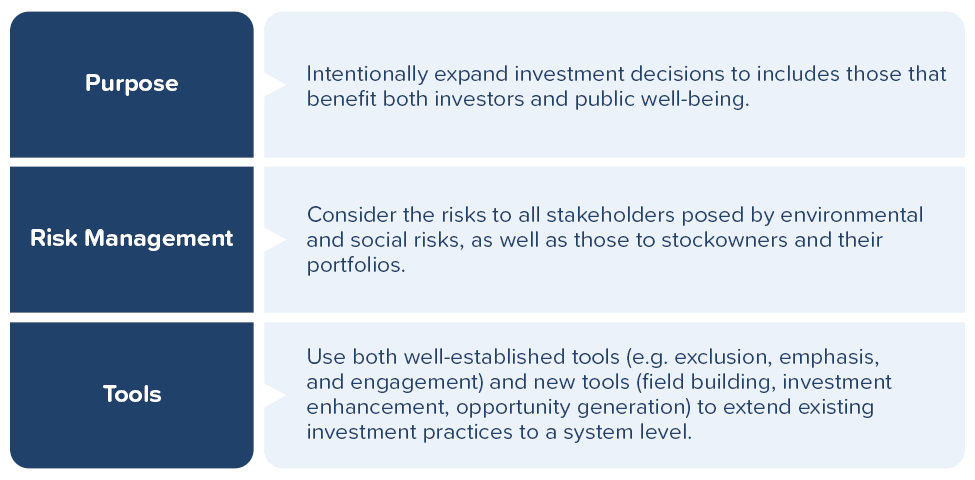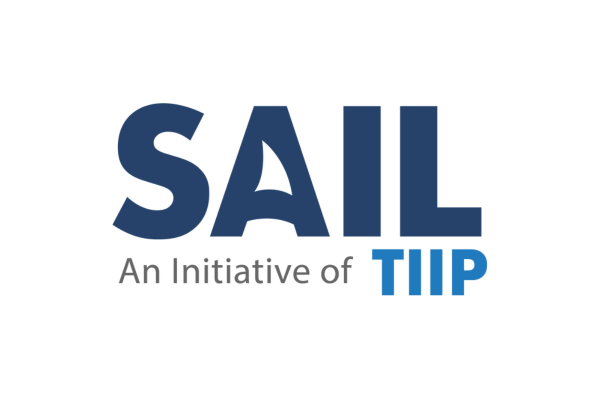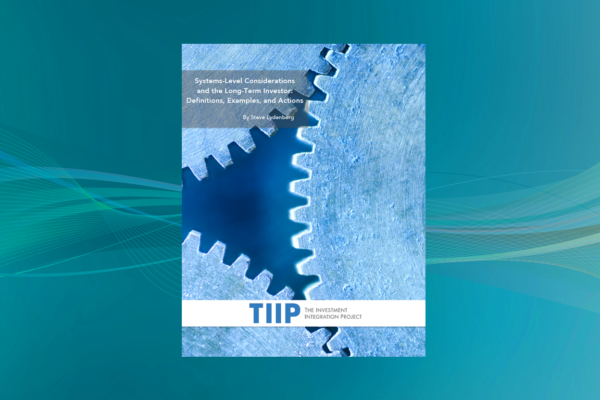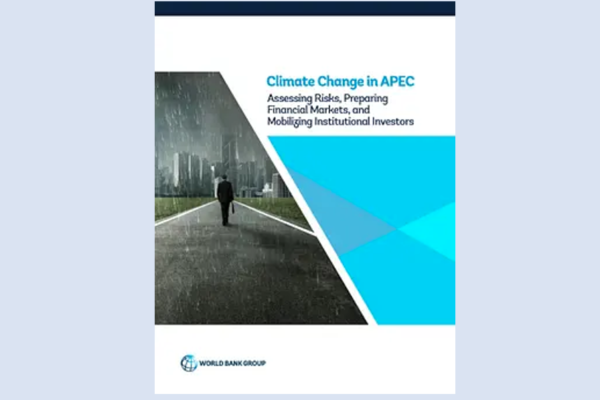Introduction
To support investors in extending or adapting existing policies, programs or practices to the system-level, TIIP developed seven hypothetical scenarios. These scenarios illustrate the nature of these transitions through such things as the re-thinking of purpose, the expansion of their risk management techniques, and the use of tools designed explicitly for system-level influence.

To illustrate these transitions, we chose three different systemic challenges:
- Climate change
- Income inequality
- Availability of sustainability data
Each scenario focuses on an investor from a different silo of the investment world:
- Pensions
- Diversified financials
- Foundations
- Family offices
- Insurance
- Private equity
Each scenario describes the investor and their current status relative to conventional or sustainable investment; the catalytic moment that prompts a decision to change; the challenges in moving forward specific to their institution; their preparation for overcoming those obstacles; the actions they take to do so; and long-term management considerations necessary once that transition to system-level investment has been made.
The purpose of these scenarios is to illustrate seven of the fundamental types of transitions that will arise no matter the type of system challenge or investor. The scenarios assume investors starting from an initial minimal commitment to ESG integration and then portray obstacles that typically stand in the way of a transition to integration of an explicitly systemic approach and steps typically useful in that transition. They are stories about turning points in the journey to fulfilling the full promise of investment: to benefit society as well as the individual. Our hope is that these scenarios help investors today as they address the twists and turns on the road to realizing that potential.
How an Insurance Company Transitions to the System-level
Case Overview: An Insurance Company Integrates its Risk Data into Investments
A new CEO at a large insurance company led the charge to integrate social and environmental risk data not just in its product premiums, but also for the company’s investments.
Key Takeaways
- MNO, one of the largest insurance companies in the world with over $1 trillion in assets under management, has generally tracked social and environmental risks for use in its products, such as the impacts of tobacco on health for life insurance premiums. More recently, it has integrated analyses of the environmental impacts of climate change across its property and casualty lines.
- Top management, however, has struggled with the relationship of social and environmental risks to its investment operations.
- A new CEO dictated that if scientific data was good enough for setting their products’ premiums, it was good enough for their investments as well.
- The CEO ordered a top-to-bottom reassessment of investment approaches for its proprietary and third-party assets including the development of consistent companywide policies and public policy advocacy to address the root causes of social and environmental risks.
- MNO decided as a core strategy to take an active role in promoting ESG through a range of disclosure initiatives. It assumed a leadership role in development of standards for material ESG data and became a supporter of the call for mandated ESG disclosure as a requirement for exchange listings around the world.
Case Detail
MNO is among the largest insurance companies in the world with over $1 trillion in assets under management and $200 billion in annual revenues. Its primary business lines include life insurance, property and casualty insurance, and investment products. Its investment assets are divided evenly between its proprietary funds and those funds it manages for third parties such as public and private pension plans.
Since risk assessment is fundamental to its insurance product lines, MNO has tended to track risks of a social and environmental nature. For example, understanding the health impacts of tobacco has long been integral to its life insurance products. More recently, it has integrated analyses of the environmental impacts of climate change across its property and casualty lines
Top management, however, has struggled with the relationship of social and environmental risks to its investment operations and, as a firm, it has not historically taken positions on the major social and environmental challenges of the day. When third-party clients instruct it to address specific issues for their accounts, MNO does so. It is less clear about what it should do with its proprietary funds and those third-party accounts silent on such issues.
Tobacco was the one issue on which MNO has long been clear. As a life insurance company, it has divested from tobacco companies across all its funds, proprietary or otherwise. Debates about taking similar steps on other social and environmental issues have ended in institutional stalemates. Some at the firm argued their only obligation was to maximize returns and that investment disciplines should not be mixed with political issues. Others asserted that they could not reasonably act on the harmfulness of tobacco and not on the risks of climate change, access to water, pandemics, income inequality and other systemic issues.
After years of inaction, a new CEO broke the deadlock. If scientific data was good enough for setting their products’ premiums, he argued, it was good enough for their investments as well. Moreover, challenges such as climate change would only continue to worsen until whole product lines became so risky as to be uninsurable. The company’s long-term prosperity depended on addressing the causes at the heart of these issues.
The CEO pointed out that, although their peers in the insurance industry have been slow to act, institutional investors have increasingly launched comprehensive programs to address a range of systemic risks.
He ordered a top-to-bottom reassessment of investment approaches for its proprietary and third-party assets including the development of consistent companywide policies and public policy advocacy to address the root causes of these risks.
The availability of reliable data for these issues being key, MNO decided as a core strategy to take an active role in promoting ESG through a range of disclosure initiatives. It assumed a leadership role in development of standards for material ESG data by the Principles for Sustainable Insurance, a coalition of major insurance firms. It also became a supporter of the call for mandated ESG disclosure as a requirement for exchange listings around the world that is being promoted by the UN-sponsored Sustainable Stock Exchanges coalition.
Further Reading
Steve Lydenberg, Robert Dannhauser, and William Burckart, “Graduating from ESG to Systems: Scenarios for Investors,” Money Management Institute and The Investment Integration Project, October 2020.
To learn more
Existing SAIL subscribers can access this post here. For a complimentary access to the CoPractice, request a demo or learn how to become a subscriber, contact us at [email protected].



